HeavenX Devlog 0006
Philosophy + Retrospective on Loadout Cards
I’ve been wanting to jot my thoughts down on this since the April playtest.
The loadout card system has been the most ambitious, and most argued about, feature in HeavenX.
It took three-fourths of a year to stand up, it touches every part of the game, and depending on who you ask, it’s either “the brain” or “the bear trap.”
Now that we’ve had six months to cool off, look at the telemetry, and look at playtesting data, here’s an honest retrospective: why we built it, what worked, what obviously didn’t, and where it’s going next.
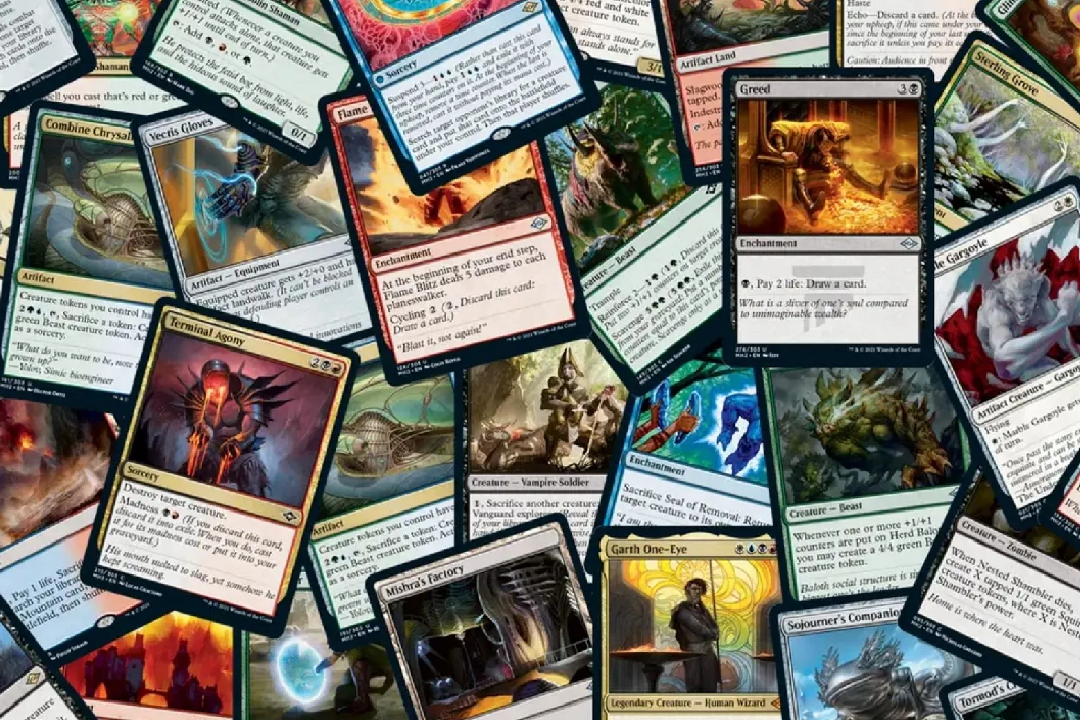
Going into the April Playtest
Before we pushed “go,” we were so, so, so... anxious. Some of us (myself included) were all-in on the idea. Many of us play Magic: The Gathering, and the thought of stacking a scriptable, modular card layer on top of an arena/Devil Daggers-style FPS was just too cool of an idea to ignore.
The pitch was simple: let players design their own power curve. Target an ability. Juice a stat. Solve a puzzle in a way the base kit never could.
The other camp wasn’t wrong either. Dropping folks into hundreds of cards with thin guidance was a real risk. Analysis paralysis is real. When a system this open doesn’t provide strong affordances, people bounce.
We knew the mechanic was cool. We also knew it wasn’t perfect. That combination of high potential and high surface area made the playtest nerve-wracking.
With time and distance, I’m glad we shipped it. The card layer is absolutely intertwined with HeavenX’s identity.
It’s good. It needs sharpening. Both can be true.
Today I want to walk through the original intent, some concrete design examples, and the direction we’re taking for the next set.
Why Cards? And How the “Alpha Set” Happened
After the 2024 playtest we were hunting for a way to expand HeavenX without bloating the core loop.
We started with a straight perk tree powered by mana collected during runs that would persist post-game.
That idea felt serviceable and, frankly, generic. The tree solved problems the way trees always do: linearly.
Then after a late-night MTG draft with the squad, the lightbulb hit: make the layer composable instead of linear.
Cards are great at this. They model actions and constraints cleanly, they ladder into one another (X modifies Y and incidentally unlocks Z), and thematically they slot right into the corporate-tech frame as “software packages” you install on your virtual body before a run.
The first “dry run” prototype was hilariously janky and instantly convincing:
- One card spawned a single boid that moved way too fast.
- A second card watched distance to the player and, on proximity, slowed time.
- A third gave you a Prismatic sidearm with one shot that dealt infinite damage and then bricked.
That loop: Set up, window, execution.... was intoxicating for me. One shot, one kill, don’t blink.
After that we leaned in hard, and by April 2025 we had shipped an alpha set north of 200 cards.
The result wasn’t perfect, but it made HeavenX way more interesting and fun.
“Bad” Cards, “Good” Cards, and Why Both Exist
It was painfully clear during the playtest that some cards were just not useful. This wasn’t a surprise internally at all, we’d already had many arguments about it and I pointed our designer to an old Mark Rosewater piece, “When Cards Go Bad.”
The gist is timeless:
- Some bad cards have to exist.
- Some are “bad for you” but great in a different deck.
- Some are for less advanced players or for decks that don’t exist yet.
- “Bad” cards reward skilled players who find the edge cases.
- And sometimes the design team just goofs.
We’re going to rework a lot of alpha-set cards. It would be negligent not to after what we learned.
But I’m not chasing a world where every card is mid.
The highs have to feel high because the baseline has texture. Distinctiveness is key.
Design Anatomy: A Few Cards Under the Microscope
Below are quick, targeted notes from design and balance. These aren’t exhaustive write ups, just practical observations now that times passed and usage data is available.
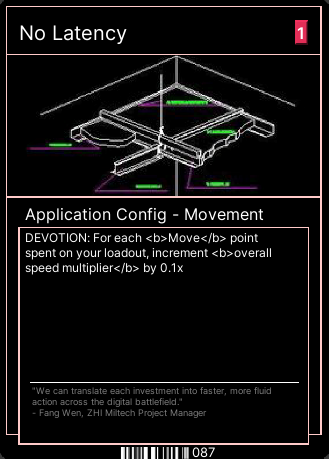
1. No Latency (087): Overpowered, simple, undeniably fun
A perfect example of how movement breaks the game faster than damage does. The card’s core ability is trivial: Go faster. But the downstream effect is huge: arena geometry, enemy timing and placement stop mattering. Entire builds start to orbit this one card. Lesson: Movement cards need tighter rails and cost lanes than raw DPS. We let this one run too hot.
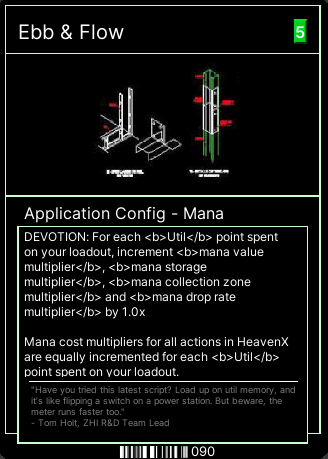
2. Ebb + Flow (090): Complex, useful, needs finer balance
This card amplifies everything about mana. In the right shell it turns the mana economy into a living thing: spikes when you need it, cushions when you don’t. It’s a strategic win because it changes what you care about mid run. It needs stricter caps and clearer UI, not a gutting.
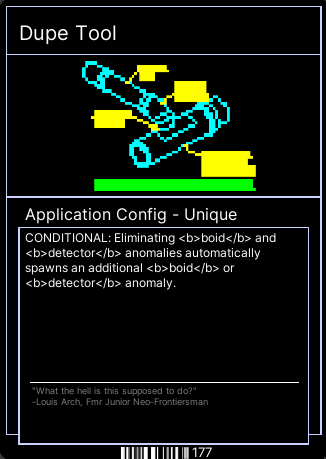
3. Dupe Tool (177): Niche, system-breaking by design
A poster child for “use the system to bend the system.” It duplicates specific enemies when they are killed. In the alpha set it mostly whiffed because there weren’t enough supporting cards to make it shine. That’s on the ecology of the card set, not the card itself. With a stronger web of supporting cards and “on-resolve” hooks, Dupe Tool becomes a build-around rather than a trap or gimmick.
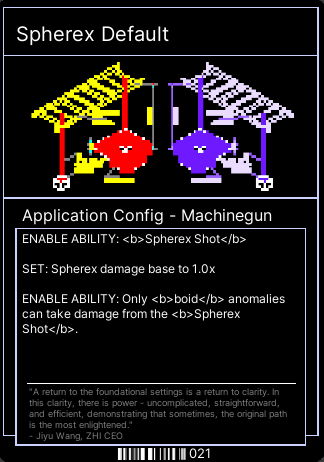
4. Spherex Default (021): Purely bad in practice
On paper, it’s a free pick (0 suit points) to encourage machinegun starts. To balance that “free,” we nerfed too many aspects of Spherex itself. The weapon then felt terrible unless you over-invested, which defeated the point. This is a good reminder that free doesn't always mean good. Something has to pay the cost somewhere, and here the weapon did.
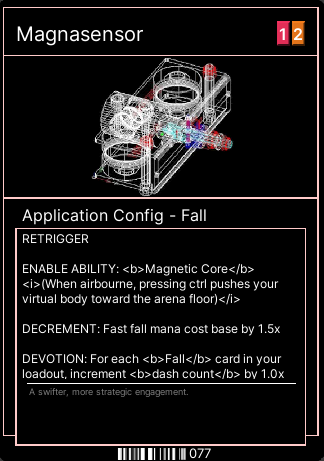
5. Magnasensor (077): Accidentally pushes the wrong keyword
Intended to support Fast Fall, it ended up buffing Scape (Dash) more, and Dash was already excellent. This is the classic “gravity well” mistake. If an S-tier keyword is in range, everything orbits it unless you explicitly anchor the design away from it. Instead of lifting a weak keyword and ability, we made the strong keyword even stronger and pushed Fast Fall deeper into the drawer.
What We’re Changing for the Next Set
We’re moving from the alpha set design (prove the system’s range) to a beta set design (raise the floor, keep the ceiling).
That means fewer one off novelties and more tightly-linked ecosystems.
Here’s the go forward:
- Keyword refinement. Some of our keywords worked. Others are too abstract or overloaded. We’re rewriting cards to be keyword first and stripping nested conditionals wherever possible. If a card needs a paragraph, it probably needs a redesign.
- Better starting points with premade loadouts/suits. We’re building a set of starter suits (pre-cooked loadouts) that demonstrate clean, identifiable builds: Movement Tempo, Time Engine, Weapon Control/Abilities, etc, etc. New players should be able to pick a suit and immediately feel the point of the system before diving into full freestyle.
- Draft/limited mode experiments. We’ve been concepting a “packs” flow that lets you build from constrained pools, with some light draft style shop rules. Limited formats force clarity: if a card only works when you have all the other pieces to make it work, it doesn’t belong in Limited or it needs a simpler sibling.
- No “number mush.” We’ll always have numeric tuning, but the goal is identity over soup. Where possible, effects and keywords will be qualitative (new pressures, new timings) rather than five more percent of a vague stat.
- A rebuilt foundation. We’re not just patching the alpha set, we’re redesigning it. The beta set is being constructed from the ground up around archetypes and good supporting cards, then we’ll re-admit the wildcards that truly add new play, not redundant complexity.
We’ll rein in the obvious all-stars (movement rockets like No Latency, always overtake generics) and either clarify or support the sleepers (Dupe Tool-style build-arounds).
The exact changes will be a mix of telemetry and lived experience from the playtest.
What I’m Asking From You
It’s been a while since the last playtest, and that distance is useful. I’d love anecdotal feedback as much as numbers.
Call to action: Tell me the three cards you always reached for and why—not just “it’s strong,” but what problem it solved in your run.
Thanks for sticking with us while we build something with sharp edges. Back to working on the game server now...
HeavenX
HeavenX is a deck building arena shooter at the cusp of the new millennium.
| Status | In development |
| Publisher | |
| Author | Strangest.io |
| Genre | Shooter, Simulation |
| Tags | 90s, Arena Shooter, Bullet Hell, Deck Building, Dystopian, FPS, FPS Platformer |
| Languages | English |
More posts
- HeavenX Devlog 00121 day ago
- HeavenX Devlog 00111 day ago
- HeavenX Devlog 001030 days ago
- HeavenX Devlog 000937 days ago
- HeavenX Devlog 000844 days ago
- HeavenX Devlog 000751 days ago
- HeavenX Devlog 000564 days ago
- HeavenX Devlog 000472 days ago
- HeavenX Devlog 000377 days ago
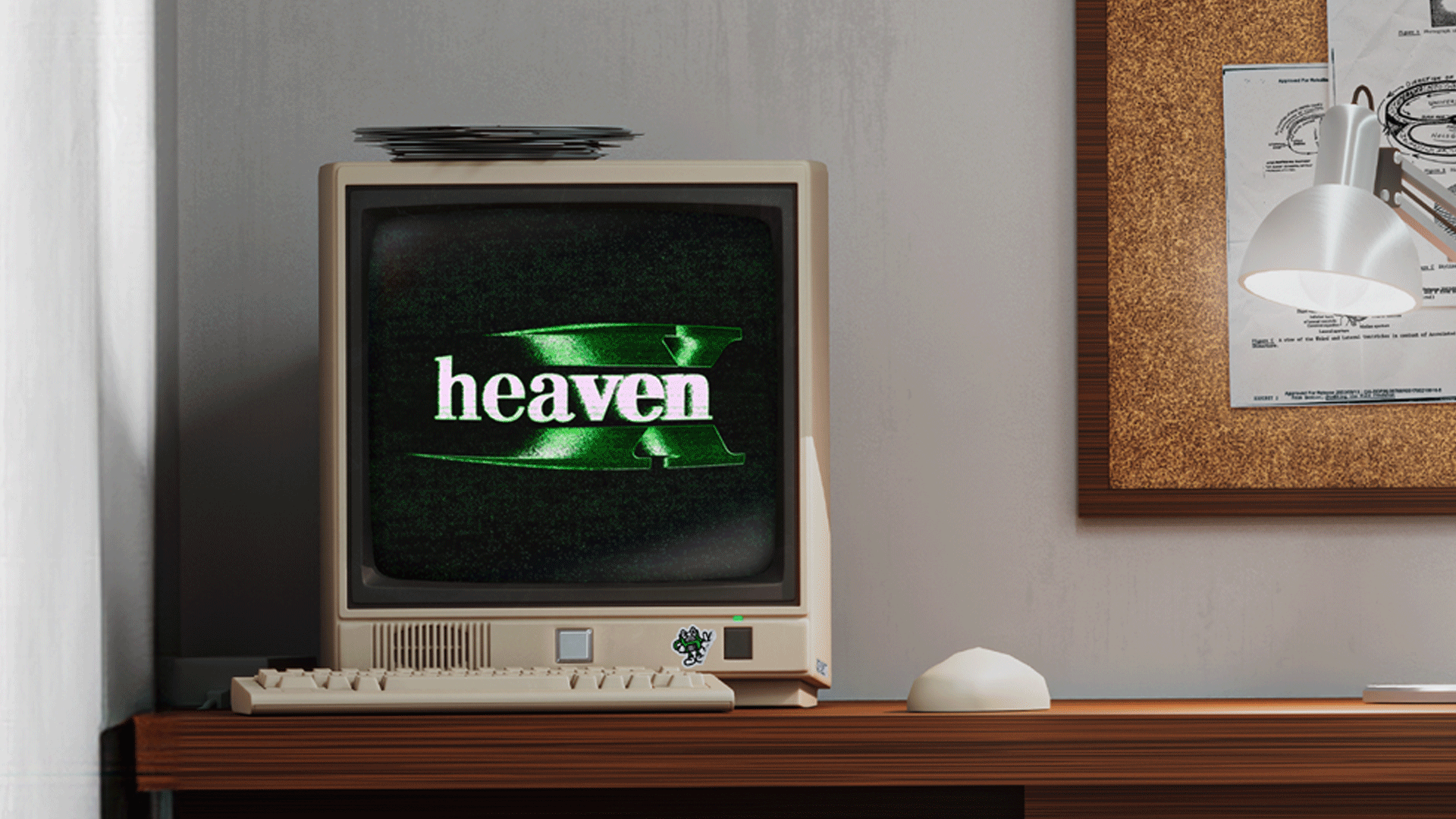
Leave a comment
Log in with itch.io to leave a comment.